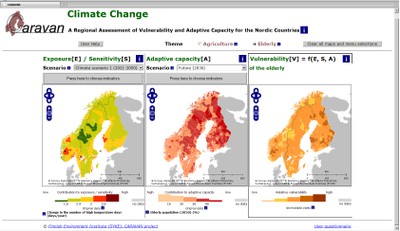| case: | NE1 | location: | Nordic region | sectors: | Health |
Which question has been addressed in this step?
Exploring risks: In which regions are elderly likely to be vulnerable to the future impacts of climate change?

Toolbox detail page(s) available for methods and tools applied in this case step:
| CARAVAN |